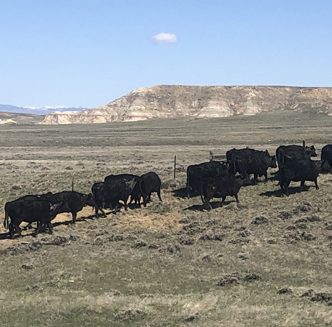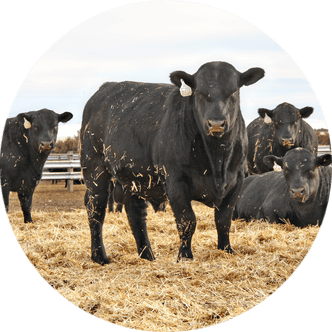Fertilizer outlook provided for 2025
As the spring crop planting season approaches, farmers are closely monitoring prices of nitrogen fertilizers, which have experienced volatility in recent years.
Fertilizer, consisting of nitrogen, phosphate and potash, is essential in the production of crops used for food, feed, fiber and fuel.
When applied annually, the crop absorbs these nutrients, affecting yields and profitability.
Since 2020, fertilizer constituted 33 to 44 percent of corn operating costs and 34 to 45 percent of wheat operating costs, according to the U.S. Department of Agriculture (USDA) Economic Research Service’s (ERS) Commodity Costs and Returns data.
As of early 2025, USDA’s fertilizer outlook suggests prices have somewhat stabilized after their 2022 peak, remaining above pre-2021 levels but below their highs and are still subject to market changes influenced by supply, demand and trade conditions.
However, according to USDA ERS analysts, the market is predicted to experience continued volatility and high prices, while some analysts foresee a slight stabilization, and others expect upward pressure due to factors such as energy costs and global demand.
Agricultural input market
Farmers and agricultural professionals should be aware of the significant price increase when planning their fertilizer purchases and application strategies for the upcoming growing season.
According to a Feb. 20 Farmonaut post, during the second week of February, significant shifts occurred in the fertilizer market, noting urea prices have surged by nine percent and now stand at $536 per ton.
While this is the highest increase among all fertilizers, UAN32 and UAN28 have seen substantial rises.
The price of UAN32 rose by seven percent, reaching an average of $393 per ton, and UAN28 experienced a five percent increase, with an average price of $342 per ton.
Farmonaut also notes diammonium phosphate (DAP) and monoammonium phosphate (MAP) prices remain high. DAP prices average $754 per ton and MAP prices remain $809 per ton.
“The stability in MAP prices and the minor increase in DAP suggest the phosphate fertilizer market is experiencing less volatility compared to nitrogen-based fertilizers,” the post reads. “However, the consistently high prices of these nutrients may still present challenges for farmers in managing input costs.”
Although MAP prices remain unchanged from last month, anhydrous ammonia costs showed a slight uptick, standing at $747 per ton, while potash fertilizer prices experienced a minor decrease, averaging $442 per ton.
Farmonaut observes rising nitrogen fertilizer costs may impact profit margins, but stable phosphate fertilizer prices enable more predictable budgeting.
Additionally, the slight decrease in potash prices could offer opportunities to optimize potassium application rates.
During this fluctuating time, farmers may need to reassess their fertilizer application strategies to maximize efficiency and minimize cost by considering alternative nutrient sources or techniques to optimize fertilizer use.
Managing fertilizer costs
Given the current fertilizer price trends, Farmonaut indicates it’s crucial for farmers and agricultural professionals to adopt strategies which could help them manage costs effectively.
Farmonaut suggests conducting regular soil tests to determine precise nutrient needs to avoid over-application of fertilizers and utilize precision agriculture tools to apply fertilizers at variable rates across fields, optimizing nutrient use efficiency.
Additional ideas include implementing crop rotation strategies to help balance nutrient requirements and potentially reduce fertilizer needs, exploring organic fertilizers, cover crops or using alternative nutrient sources that may be more cost-effective.
Optimizing the timing of fertilizer applications to maximize nutrient uptake and minimize losses is also suggested.
Global influences
Tariffs have been a major concern in the fertilizer industry since their implementation, and the precise impact of these tariffs remains uncertain.
Fortunately, farmers and agricultural professionals have had time to prepare by securing as much fertilizer as possible, which will help minimize potential supply disruptions or increased costs for the upcoming spring season.
However, to fully understand the current fertilizer price trends, it’s essential to consider the global factors influencing these prices.
Farmonaut mentions several key elements contributing to the price fluctuations seen in February 2025, including the price of natural gas, a key component in fertilizer production, which significantly impacts fertilizer costs.
Another factor influencing pricing is global demand, as increasing food production needs worldwide are driving up the demand for fertilizers.
Supply chain disruptions continue to challenge global markets, affecting fertilizer production and distribution.
With stricter environmental policies in some regions, this too may impact fertilizer production and pricing, and even the currency exchange rates fluctuations can affect the cost of importing and exporting fertilizers.
“Understanding these global factors can help farmers and agricultural professionals anticipate potential price changes and plan accordingly,” notes Farmonaut.
Melissa Anderson is the editor of the Wyoming Livestock Roundup. Send comments on this article to roundup@wylr.net.





